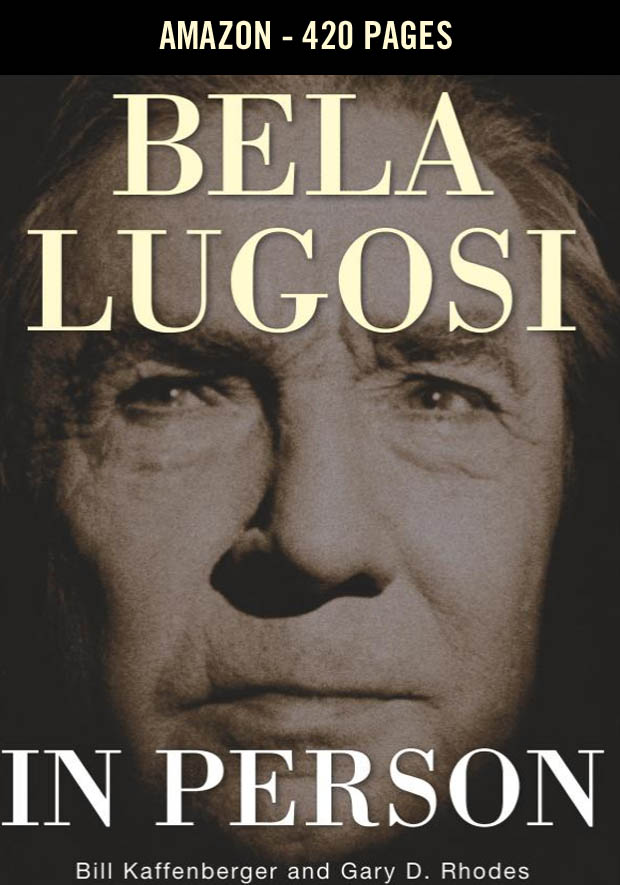Wolfman vs Werewolf
Universal's proto-wolfman movie from 1935, Werewolf of London, is helped considerably by the understated acting of Warner Oland (born Johan Verner Olund in Sweden) and by Henry Hull, who plays Doctor Glendon, a botanist trying to deny, then to desperately control the lycanthropy he picked up from a wolf bite while in Tibet.
Though a classic Universal horror film, Werewolf of London has aged into being a very dated film with stiff staging and direction, and a script that works the mad doctor/frightened wife angle in a wholly predictable way (the number of wives in troubled relationships with "genius" mad-scientists are legion in the monster films of the 30s and 40s.)
But Oland and Hull are very good together, easily the best thing going for the film, and Oland brings a melancholy to his screen-time that improves this tale of hairy doom, along with Hull's arrogant dismissal of his problem until its simply not possible any more to deny what's in the mirror.
John Fulton supplied the special effects, and Jack Pierce (of Frankenstein fame) did the makeup. Pierce would do the makeup for Lon Chaney, Jr.. on The Wolf Man a few years later.
Lon Chaney's tragic Larry Talbot from Wolf Man is a direct cousin to Warner Oland's Dr. Yogami from Werewolf, and Pierce's 1941 makeup for the transformed wolfman is just a completed version of the makeup he originally intended for Henry Hull, who fought against being given the full-face fur treatment.
Compared to each other, The Wolf Man of 1941 is the better film, though pickled in a sentimentality that's barely present in the gloomy, under-appreciated Werewolf of London.
Valerie Hobson in Werewolf of London
Valerie Hobson plays another wife to a madman (she performs the same task in Bride of Frankenstein, also 1935).
She's certainly more assertive here, only putting up with Henry Hull's experiments to a certain degree, accompanied by his demands and orders to placate his jealousy over an old school friend come to visit who is taken on an affection for his devoted wife.
Meanwhile, Hull is going through Jekyll-and-Hyde transformations brought on by a werewolf bite while visiting Tibet. The only thing keeping his disease in check are the blooms of a rare flower, and fellow werewolf sufferer Warner Oland appears, wanting the flower to subdue his own appetites when the night falls. Unfortunately for the two men, there are hardly any blooms left...
It is an old film with all of the creeky stylistic tics of that era in Universal monster movies. What brings the film charm are the gloomy melancholies of the script, Warner Oland and Henry Hull talking over their problem which binds them together, but Hull won't quite accept, and Valerie Hobson.
There are unintentionally funny moments, like Henry Hull transforming into a wolfman and rushing to get outside, but pausing like a reasonable Englishman to throw on a scarf before going into the foggy night air.
This film is in a way a dry run for the Lon Chaney Jr version of lycanthropy six years late (Universal again, "The Wolfman"), which gets down to the business of werewolfery faster and with more production panache.
Amazon - Bela Lugosi in Person - 420 pages
Amazon - No Traveler Returns: The Lost Years of Bela Lugosi - 346 Pages
Frankenstein Created Woman - 1967
Frankenstein meets the Wolfman - 1943
What's Recent
- The Devil and Miss Jones - 1941
- Sinners - 2025
- Something for the Boys - 1944
- The Mark of Zorro - 1940
- The Woman They Almost Lynched - 1953
- The Cat Girl - 1957
- El Vampiro - 1957
- Adventures of Hajji Baba – 1954
- Shanghai Express 1932
- Pandora's Box – 1929
- Diary of A Chambermaid - 1946
- The City Without Jews - 1924
- The Long Haul
- Midnight, 1939
- Hercules Against the Moon Men, 1964
- Send Me No Flowers - 1964
- Raymie - 1964.
- The Hangman 1959
- Kiss Me, Deadly - 1955
- Dracula's Daughter - 1936
- Crossing Delancey - 1988
- The Scavengers – 1959
- Mr. Hobbs Takes A Vacation - 1962
- Jackpot – 2024
- Surf Party - 1964
- Cyclotrode X – 1966
Original Page Dec 27, 2009 | Updated April 4, 2021
